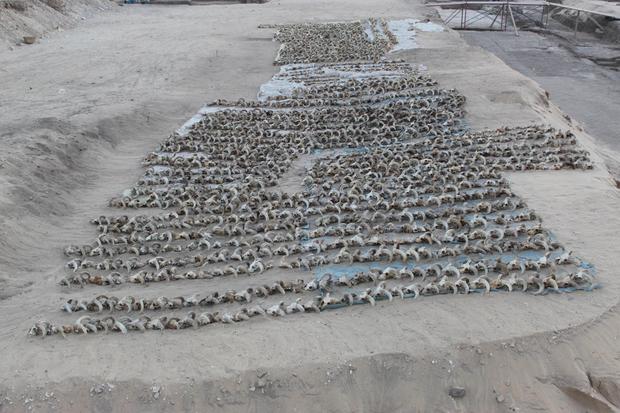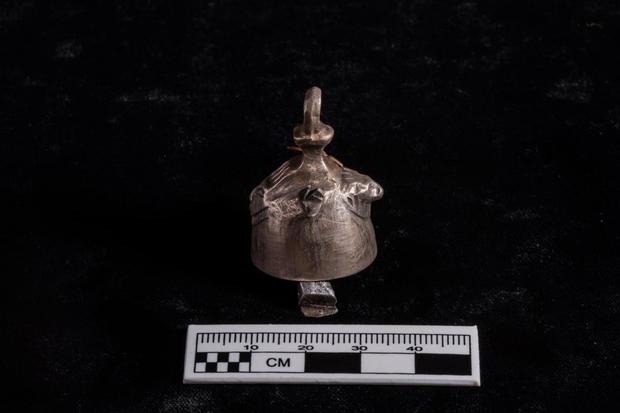Archaeologists have announced the discovery of more than 2,000 rams’ heads at the temple of the ancient Egyptian pharaoh Ramses II — a find that the man in charge of the dig said surprised even veteran Egyptologists and showed the endurance of Ramses’ impact, as the skulls were left there a millennium after the pharaoh’s rule.

A team of archaeologists with New York University’s Institute for the Study of the Ancient World (ISAW) made the discovery in the city of Abydos, one of the oldest cities and richest archaeological sites in Egypt. It’s located about seven miles west of the Nile River in Upper Egypt, some 270 miles south of Cairo.
The ram skulls were found stacked in the northern precinct of the temple, said Egypt’s Ministry of Tourism and Antiquities, which announced the discovery on Saturday.
“We came across some random pieces of skulls first,” Dr. Sameh Iskander, head of the ISAW mission, told CBS News. “We didn’t know what they were, but as we continued our excavation and exploration, all of sudden we found a whole area filled with ram skulls.”

“These are obviously offerings that were made to the temple of Ramses during the Ptolomaic period, which shows even 1,000 years after Ramses II, that he was still revered.” Ramses II ruled over ancient Egypt for about 60 years before his death in 1213 BC.
Iskander explained that some of the ram heads were still mummified, while “others could have been mummified but the wrappings or the covers of mummifications were not there anymore.”
The skulls were found among other objects, from papyrus to leather artifacts and statues, about six feet under the contemporary surface of the desert in what had been a storeroom of the ancient temple.
The large number of skulls found in the same place was “surprising even for Egyptologists,” Iskander said.

“We are sure they were all dumped at the same time, so this was not an accumulation of skulls that were brought in over the years, but they came from somewhere else and were dumped into this magazine at some point for some reason which we don’t know yet,” he told CBS News. “It is significant because this place where they ended up is not just any place in the temple, so they were brought there for a reason. They were not just dumped in the desert but were inside this revered domain of the temple.”
The archeologists also unearthed a large structure made of mudbricks with walls about 16 feet thick dating back about 4,200 years, to ancient Egypt’s Sixth Dynasty.
“It is a major structure that will change our concept of the landscape of Abydos. This wall was built for something, it was at least 30 feet high.” Iskander said. “We don’t know exactly what this wall is. It’s possible that this was a wall of the antient Abydos, which was never found. Could it be something else? Maybe, that’s what we are working on now.”

The mission also found other mummified animal remains, including dogs, goats, cows and gazelles.
Beside the massive structure, one very small object also captured Iskandar’s attention.
“We also found a small bronze bell in excellent condition with the clapper, so we can hear the same sound of the ancient time. I was very happy to find it,” he said. “It was probably used to mark a herd.”

The head of the American mission, whose team has worked at the Abydos site since 2008, spoke to CBS News after traveling back to New York. He said a lot of research was still needed to find explanations for the latest discoveries.
“I hate to keep saying ‘we don’t know,’ but this is the nature of archaeology. We keep working on findings that might lead to something, or not,” he said, adding that he and his team may even need to “leave it to the next generation — they may have a better idea or other discoveries.”
“Every year we have lots of finds and we come back very happy with the new finds, but we also come back with a huge sack full of questions,” he said.